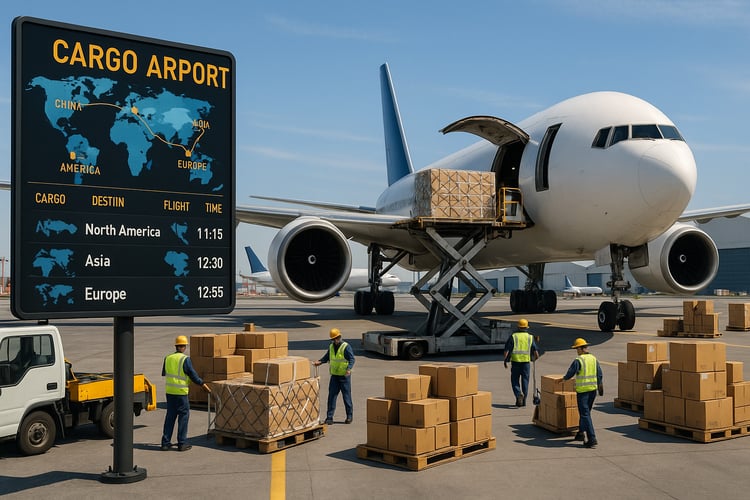Air Freight Market Enters Adjustment Period – How Should Businesses Choose for Cross-Border Shipping?

Table of Contents
In our last article, we introduced the current situation of ocean freight rates. In this issue, we turn to the trends in the air freight market.
Driven by global e-commerce and trade, air freight has always been an important channel for fast delivery and urgent shipments. However, since 2024, the air freight market has faced new shifts: policy tightening, capacity pullbacks, and regional conflicts have intertwined, impacting freight rates, space availability, and efficiency.
For small and medium-sized enterprises (SMEs), how can they make flexible decisions between ocean and air transport? This article summarizes the latest global air freight dynamics and 2025 trend forecasts for your reference.
1. Cross-Border E-Commerce Fueled a Boom in the First Half of the Year, but Policy Changes Cooled Volumes
In the first half of the year—particularly on the China–U.S. route—air freight experienced a surge driven by cross-border e-commerce orders. However, starting in May, the U.S. suspended the “de minimis” exemption policy for small-value Chinese goods, directly reducing air freight demand for certain fast-moving products.
The global air freight benchmark, Freightos Air Index, fell by about 7% year-on-year.
Air freight capacity grew too quickly, with some routes already showing oversupply.
2. Latest Air Freight Rate Monitoring
(July 2025 data, source: Freightos Terminal)
China–North America: Rates increased thanks to capacity control, maintaining strong pricing.
China–Europe: Rates declined as a large number of freighters shifted from the U.S. route to the European route, intensifying competition.
Middle East routes: Highly volatile due to June’s Israel–Iran airspace conflict, causing severe regional backlogs.
3. 2025 Trend Forecast – Policy Risks Persist, Volatility Remains the Norm
The U.S. plans to fully abolish the de minimis exemption by 2027, which will significantly affect the air freight model for small and lightweight e-commerce goods.
Freighter capacity is expected to keep increasing; if demand fails to keep pace, prices may face further downward pressure.
If there is no new round of major geopolitical conflicts, air freight prices are likely to remain “stable to slightly weaker.”
4. Going Global – Air Freight Isn’t the Only Option, Combining Warehousing + Multimodal Transport Offers More Flexibility
For exporters with high time-sensitivity, small product volume, and high unit value, air freight remains an irreplaceable mode. However, given price fluctuations and policy uncertainties, it is recommended to:
Allocate transport by product category: Use air freight for high-value or urgent items, ocean freight for bulk goods.
Plan warehousing resources in advance: Combine with overseas warehouses for pre-positioned inventory to improve efficiency and ease air freight pressure.
Maintain close communication with logistics platforms: Get the latest space availability and customs clearance advice.
Monitor policy changes: Adjust transport models promptly when duty-free rules or route policies change.
Some service platforms are now offering integrated solutions—overseas warehouse stocking + air freight coordination + end-to-end fulfillment—helping SMEs achieve both speed and cost reduction. This approach has already received positive feedback from e-commerce platform clients.
Conclusion:
Compared to ocean freight, air freight offers greater agility but also more volatile costs. For exporters, tracking route trends, monitoring policy developments, and flexibly using multi-channel service platforms are key to navigating periods of air freight fluctuation.
Early inventory preparation, flexible routing, resource integration, and long-term planning remain the fundamental strategies for steady global expansion.
If you are considering an air freight + warehousing approach, look into service platforms—such as Abrasivestocks—that already have localized operational experience in North America, Europe, Australia, and the Middle East, enabling faster, more reliable deliveries with fewer missteps.



.jpeg?width=400&name=4%20(2).jpeg)